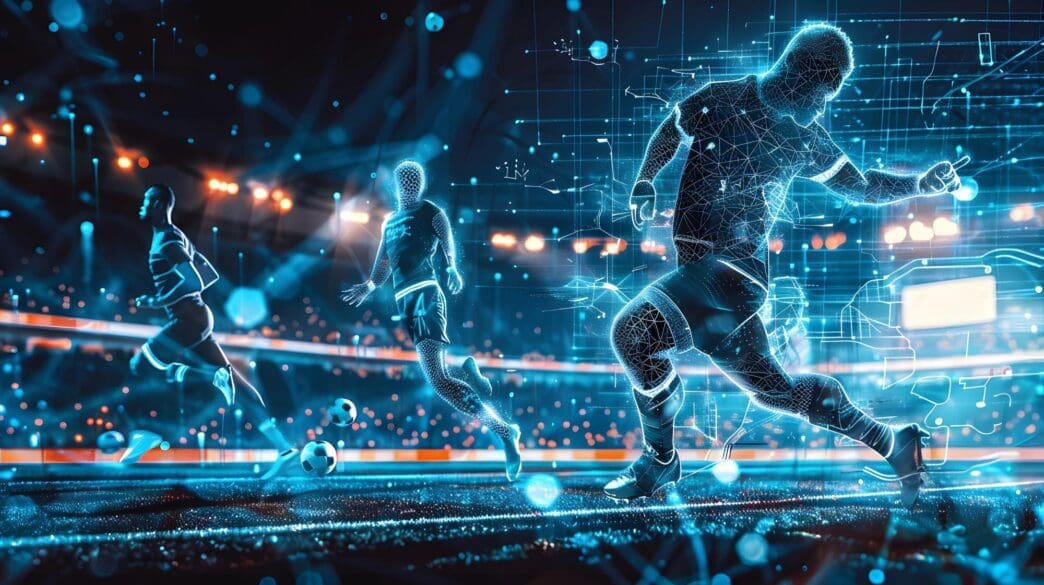Executive Summary
The Trajectory So Far
The Business Implication
Stakeholder Perspectives
Artificial intelligence is rapidly transforming the landscape of professional sports, offering an unprecedented suite of tools that empower teams, coaches, and athletes to achieve peak performance, optimize strategy, and gain a critical competitive edge. From granular player performance analysis and intelligent talent scouting to dynamic game strategy and personalized injury prevention, AI is fundamentally reshaping how sports organizations operate, enabling data-driven decisions that were previously unimaginable. This technological revolution is not just for elite clubs; it is becoming an indispensable component for any team aspiring to innovate, improve, and succeed in the highly competitive world of professional athletics.
The AI Revolution in Sports: A New Competitive Frontier
The integration of artificial intelligence into sports is more than a technological upgrade; it represents a paradigm shift in how teams approach every aspect of their operation. AI’s ability to process vast quantities of data at speeds and scales impossible for humans unlocks insights that were previously hidden. This analytical power extends beyond mere statistics, delving into complex biomechanical patterns, strategic tendencies, and even physiological markers that influence an athlete’s potential and readiness.
Modern sports demand constant innovation, and AI provides the engine for that evolution. Teams are no longer relying solely on intuition or traditional scouting reports. Instead, they are leveraging sophisticated algorithms to augment human expertise, creating a synergy that drives superior outcomes. This fusion of human insight and machine intelligence is redefining what is possible in athletic achievement and team management.
Key AI Tools Driving Sports Innovation
Advanced Player Performance Analytics
One of the most immediate and impactful applications of AI in sports is in the realm of player performance analytics. Wearable technology, such as GPS trackers, heart rate monitors, and accelerometers, collects a continuous stream of data on an athlete’s physical output during training and games. AI algorithms then process this raw data to identify patterns, measure efficiency, and provide actionable insights into speed, endurance, agility, and workload.
Computer vision systems, often employing deep learning, analyze game footage to track player movements, ball trajectories, and intricate biomechanical details. These systems can assess technique, identify subtle flaws in form, and quantify metrics like shot accuracy, passing efficiency, or defensive positioning. This level of detail allows coaches to tailor training programs with extreme precision, focusing on specific areas for improvement unique to each athlete.
Furthermore, predictive analytics, powered by AI, can forecast an athlete’s future performance based on historical data, training load, and even sleep patterns. This capability is invaluable for managing player rotation, optimizing peak performance windows, and making informed decisions about player development pathways.
Intelligent Talent Identification and Scouting
The traditional method of scouting, heavily reliant on human observation, is being augmented and enhanced by AI-driven tools. These systems can ingest and analyze data from hundreds of thousands of players across various leagues and age groups, far exceeding the capacity of human scouts. By processing statistics, video clips, and even social media sentiment, AI can identify players who fit specific team profiles or possess undervalued skill sets.
Predictive models use machine learning to assess a player’s potential for future success, considering factors beyond current performance, such as age, development trajectory, and adaptability. This allows teams to make more informed decisions in drafts, transfers, and academy recruitment, reducing the risk associated with high-stakes investments. AI can also help identify “hidden gems” in less-scrutinized leagues, expanding the talent pool significantly.
Data-Driven Game Strategy and Tactical Optimization
AI offers profound advantages in developing and refining game strategies. Algorithms can analyze vast archives of past games, both of the team and its opponents, to identify recurring patterns, strengths, and weaknesses. This includes analyzing offensive plays, defensive formations, set-piece effectiveness, and even individual player tendencies under pressure.
Simulation tools, powered by AI, allow coaches to test different tactical approaches in virtual environments before implementing them on the field. These simulations can predict outcomes based on various player lineups, strategic adjustments, and opponent reactions. During live games, AI can provide real-time insights to coaches, suggesting optimal substitutions or tactical shifts based on the unfolding dynamics of the match, offering a distinct advantage in critical moments.
Personalized Injury Prevention and Rehabilitation
One of the most significant concerns for any sports team is player injury, which can be costly both in terms of performance and financial outlay. AI is revolutionizing injury prevention by building predictive models that assess individual player risk. These models integrate data from training loads, biometric markers, sleep quality, nutritional intake, and historical injury data to identify athletes at high risk of specific injuries.
When an injury does occur, AI aids in optimizing rehabilitation protocols. By tracking recovery progress through wearables and performance metrics, AI can suggest personalized rehabilitation exercises and timelines, ensuring a safe and efficient return to play. This proactive and personalized approach minimizes downtime and helps extend an athlete’s career.
Enhanced Fan Engagement and Business Operations
Beyond on-field performance, AI also plays a crucial role in the business side of sports, particularly in fan engagement. AI-powered analytics can segment fan bases, predict attendance patterns, and personalize marketing campaigns for tickets, merchandise, and sponsorships. This leads to more effective outreach and increased revenue streams.
In stadiums, AI can optimize operational efficiency, from managing crowd flow and security to predicting concession demands. For broadcasters, AI can generate real-time statistics, power automated commentary, and create personalized highlight reels, enhancing the viewing experience for audiences. By understanding fan preferences and behaviors, teams can cultivate deeper connections and foster stronger loyalty.
The Future of AI in Sports Teams
The integration of AI into sports is no longer a futuristic concept; it is a present reality and a rapidly evolving necessity for competitive teams. As AI technologies become more sophisticated and accessible, their role will only expand, leading to even more nuanced insights and predictive capabilities. The continuous feedback loop between data collection, AI analysis, and human application will drive unprecedented levels of performance and strategic acumen.
Ultimately, teams that embrace AI will not only gain a significant competitive advantage but will also foster a culture of data-driven decision-making that optimizes every facet of their organization. The ability to harness these intelligent tools will distinguish the leaders in sports, ushering in an era where technology and athletic prowess converge to redefine excellence.








